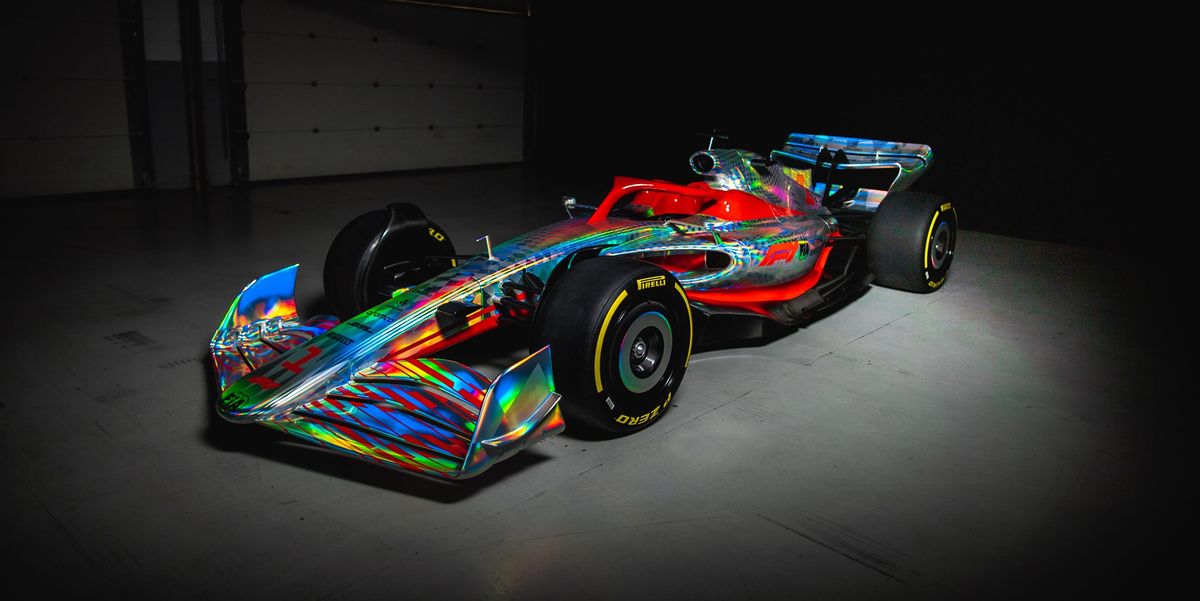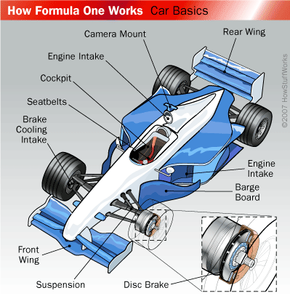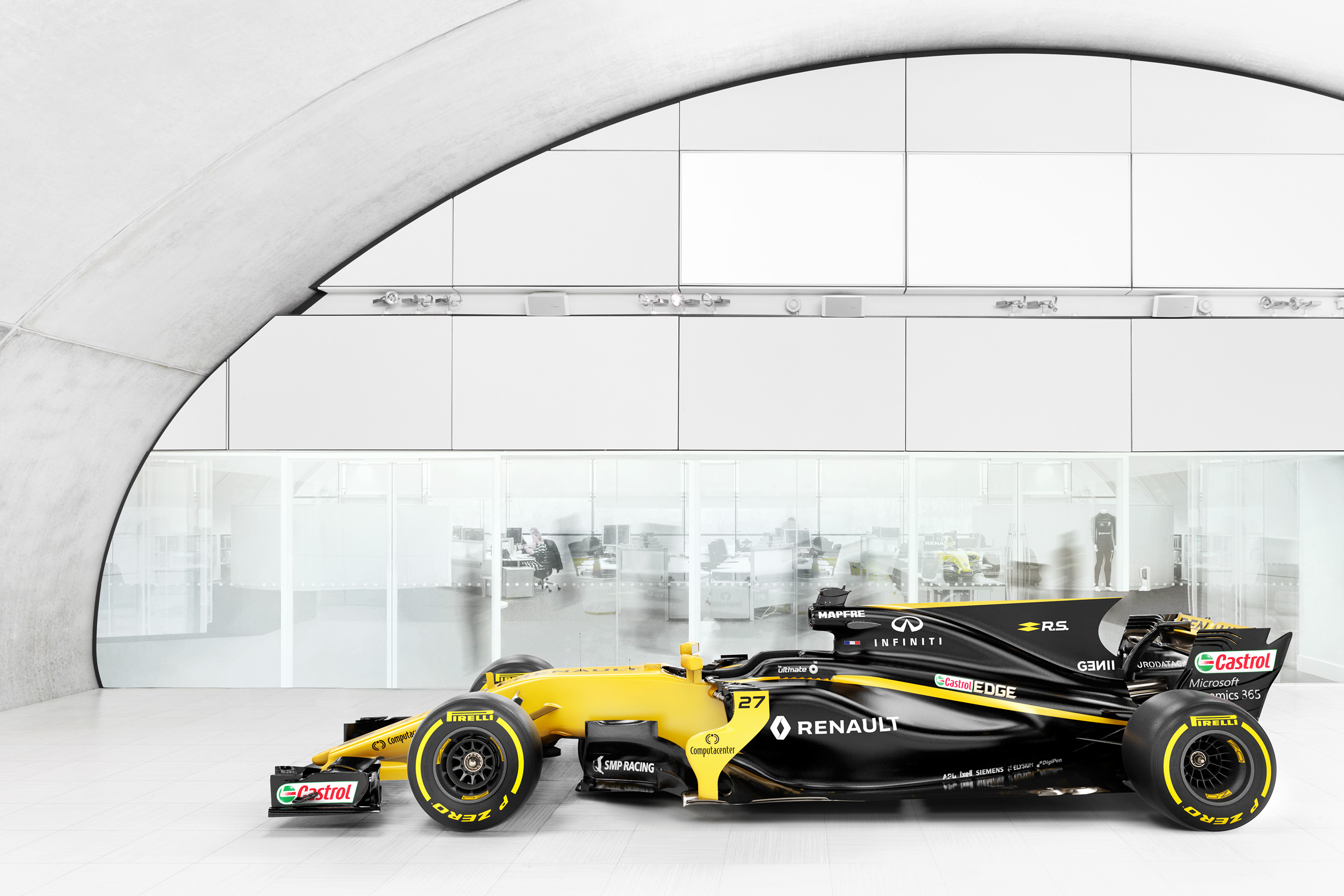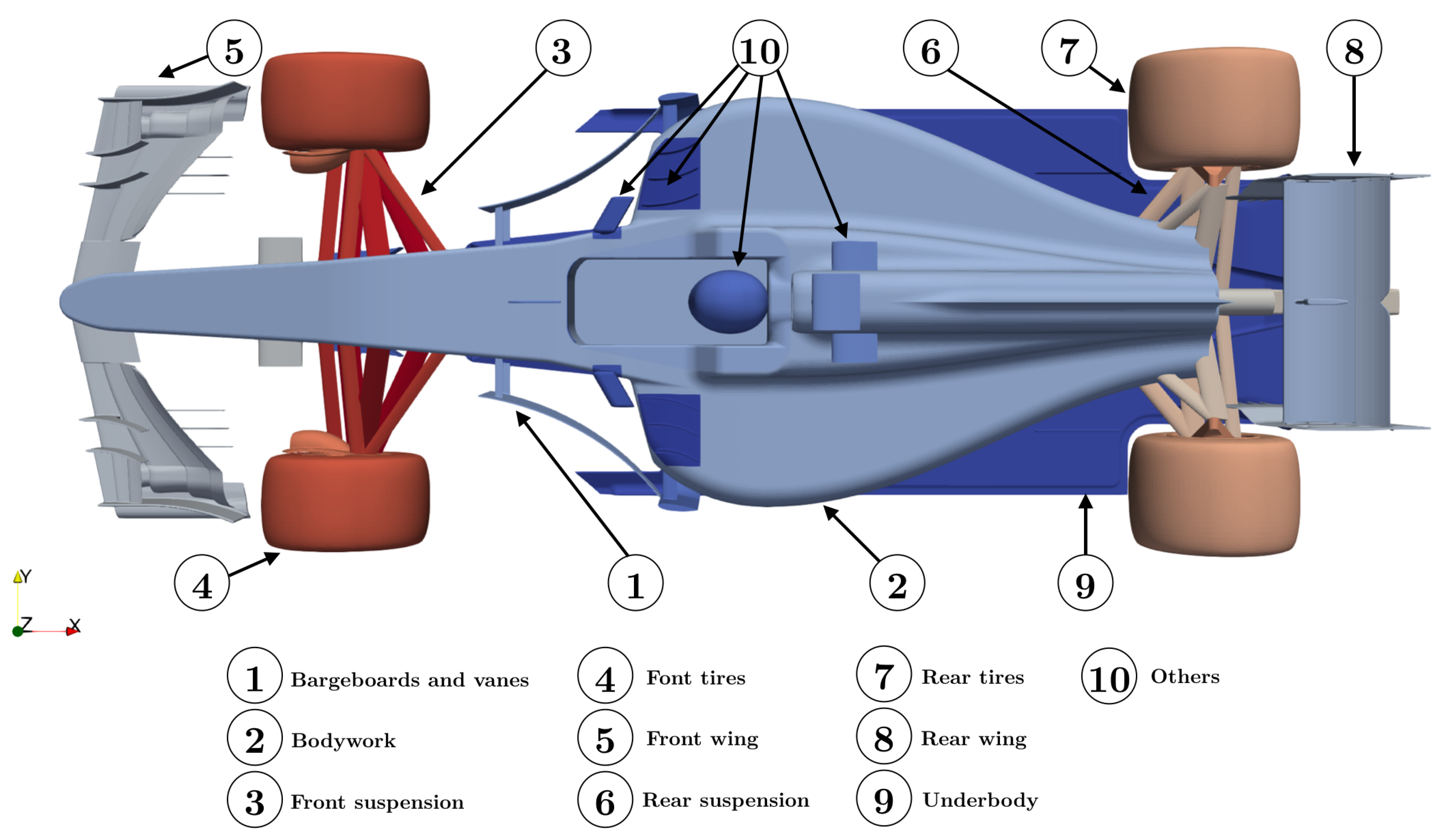Science behind formula 1 cars ~ Formula 1 cars have evolved from racing coffins to lean sophisticated machines. Theyre able to haul a car doing over 200 mph down to walking speed in. Indeed lately is being hunted by users around us, perhaps one of you. People are now accustomed to using the net in gadgets to see image and video data for inspiration, and according to the name of this article I will discuss about Science Behind Formula 1 Cars Revving to a capped 15000 rpm way lower than the 20000rpm peaks of the 24-litre V8 units that preceded hybrids the ICEs produce in the region 700bhp of the total PU output though the four F1 engine manufacturers Mercedes Ferrari Renault and Honda guard accurate figures closely.
Source Image @ www.autosport.com
Explaining The Science Behind F1 Simulation

In current motor racing competitions including Formula 1 DTM Indy cars and Touring Car aerodynamic downforce plays the most important role in the performance of the cars. This documentary gives an inside look at these machines and the endless search for perfection in aerodynamics lightness solidity and power. Your Science behind formula 1 cars images are ready. Science behind formula 1 cars are a topic that has been hunted for and liked by netizens today. You can Download or bookmark the Science behind formula 1 cars files here
Science behind formula 1 cars - On a Formula One car the suspension elements can be grouped into three sections - the inboard suspension the outboard suspension and the elements that are in the airflow. Former race engineer Gary Anderson explains some of the astonishing physics behind the performance of a Formula 1. No wonder why Red Bull Racing takes maintenance seriously. The systems on a Formula 1 car work in essentially the same way.
Racing Science 50MIN The Formula 1 is one of the most watched sports on the planet and its cars veritable ambassadors on wheels at the cutting edge of technologyevery inch of them is conditioned to go ever faster ever more safely. Icarus shot for the sun of course. In 1968 and 1969 Tony Rudd and Peter Wright at British Racing Motors BRM experimented on track and in the wind tunnel with long aerodynamic section side panniers. Formula 1 brakes are some of the most incredible pieces of tech on the planet.
Hydraulic tubes rods and actuators. Each cases being simulated with a gap between the aerofoil of 10mm and 50mm when the DRS is activated. Several Formula One designs came close to the ground effect solution which would eventually be implemented by Lotus. The idea behind the move was to enable cars to follow each other more closely in order to increase overtaking.
While drivers like Schumacher and Hamilton are household names the secrets behind their cars are relatively unknown. Cars Formula 1. 37 Front bodywork height. The front wing of a Formula One car creates about 25 of the total cars down-force.
With F1s regulations changing to give cars more mechanical grip in 2017 Pirellis new fronts and rears are expected to weigh in at about 95kg and 115kg respectively. In the mid 1960s the use of soft rubber compounds and wider tires demonstrated that good road adhesion and hence cornering ability was just as important as raw engine power in producing fast lap times. Given all this its no surprise this technology has made its way to the road with Mercedes-AMGs Project One hypercar using an F1-derived 16-litre turbo-hybrid power unit and Aston Martins stunning Valkyrie which Red Bulls Chief Technical Officer Adrian Newey played a part in developing utilising an energy recovery system. Its cars are veritable ambassadors on wheels at the cutting edge of technology.
The mostly flat bottom of the car controls the airflow under the car which uses a rear diffuser to suck that air from beneath the car thus generating more than 50 of the total downforce. Take a look at the new F1 cars on the grid for 2019. 34 Width ahead of the rear wheel centre line. 341 Bodywork width ahead of the rear wheel centre line must not exceed 1400mm.
Formula 1 is one of the most watched sports on the planet. F1 aerodynamics perform precisely the opposite function using the science of airflow to push everything down towards the track. This study uses NACA 2408 2412 and 2415 for the flap wing and BE50 for the main plane. 342 In order to prevent tyre damage to other cars the top and forward edges of the lateral extremities of any bodywork forward of the front wheels must be at least 10mm thick with a radius of at least 5mm.
Former race engineer Gary Anderson explains some of the astonishing physics behind the performance of a Formula 1. These Formula One racers are the. Learn the physics behind a Formula 1 car. The updated edition of The Science of Formula 1 Design helps clarify the secrets of F1 technology for fans who want to understand whats going on in the cars but like myself dont hold engineering degrees.
Designs such as in 3 4 are one of the most widely used spoiler airfoil but needs to be enhanced as per. Formula 1 cars are data-driven intelligent systems that can reach speeds of over 200 mph. A piece of kit which can withstand 15 times the static load of a Formula 1 car and the hit of a 20Kg wheel at 225kmh. Todays Formula One cars also management the airflow beneath the car to maximize downforce with the front and rear wings used to properly balance the aerodynamic downforce of the car front to rear.
A Formula 1 car is expensive to say the least and made of the. The Science Behind Formula One Car Maintenance The carbon fiber nose cone of a Formula One car costs 170000-200000. A technical deep dive into building the worlds fastest cars F1 drivers experience similar g-force to Apollo astronauts during Earth re-entry. Its clear and easy to follow with a generous complement of useful illustrations and.
All bodywork situated forward. There have been more people to space than have driven an F1 car. The car after the crash and thoroughly checked it but there were no cracks and no buckling So now that the Halo has proved itself its time to unearth the technology behind this device. Learn the physics behind a Formula 1 car.
But whilst on an Airbus A320 or even a modern UAV or fighter jet there is a huge amount of space to work in on a grand prix car the opposite is true. This downforce which can be in excess of 2000kg pressing a car into the racetrack has the effect of vastly increasing the amount of grip produced by a chassis with a commensurate increase in cornering speeds. Hidden away underneath the bodywork of an F1 car are the inboard elements of the suspension -. Formula 1 was the next setting for ground effect in racing cars.
The wind speed is set up to 43 ms that is the average speed of F1 car when cornering.
Source Image @ kmscubreporter.com
Source Image @ physicsbuzz.physicscentral.com
Source Image @ id.scribd.com
Source Image @ www.caranddriver.com
Source Image @ auto.howstuffworks.com
Source Image @ thegsaljournal.com
Source Image @ id.pinterest.com
Source Image @ arstechnica.com
Source Image @ www.mdpi.com
If you are searching for Science Behind Formula 1 Cars you've reached the perfect location. We ve got 10 graphics about science behind formula 1 cars adding images, photos, pictures, wallpapers, and more. In these page, we also have variety of graphics out there. Such as png, jpg, animated gifs, pic art, logo, blackandwhite, transparent, etc.
If the posting of this internet site is beneficial to your suport by posting article posts of this site to social media marketing accounts which you have such as Facebook, Instagram and others or can also bookmark this blog page along with the title Energies Free Full Text Aerodynamic Study Of The Wake Effects On A Formula 1 Car Html Employ Ctrl + D for computer devices with Home windows operating system or Command line + D for computer devices with operating system from Apple. If you are using a smartphone, you can also use the drawer menu from the browser you utilize. Be it a Windows, Mac pc, iOs or Android os operating-system, you'll still be in a position to download images using the download button.








0 comments:
Post a Comment